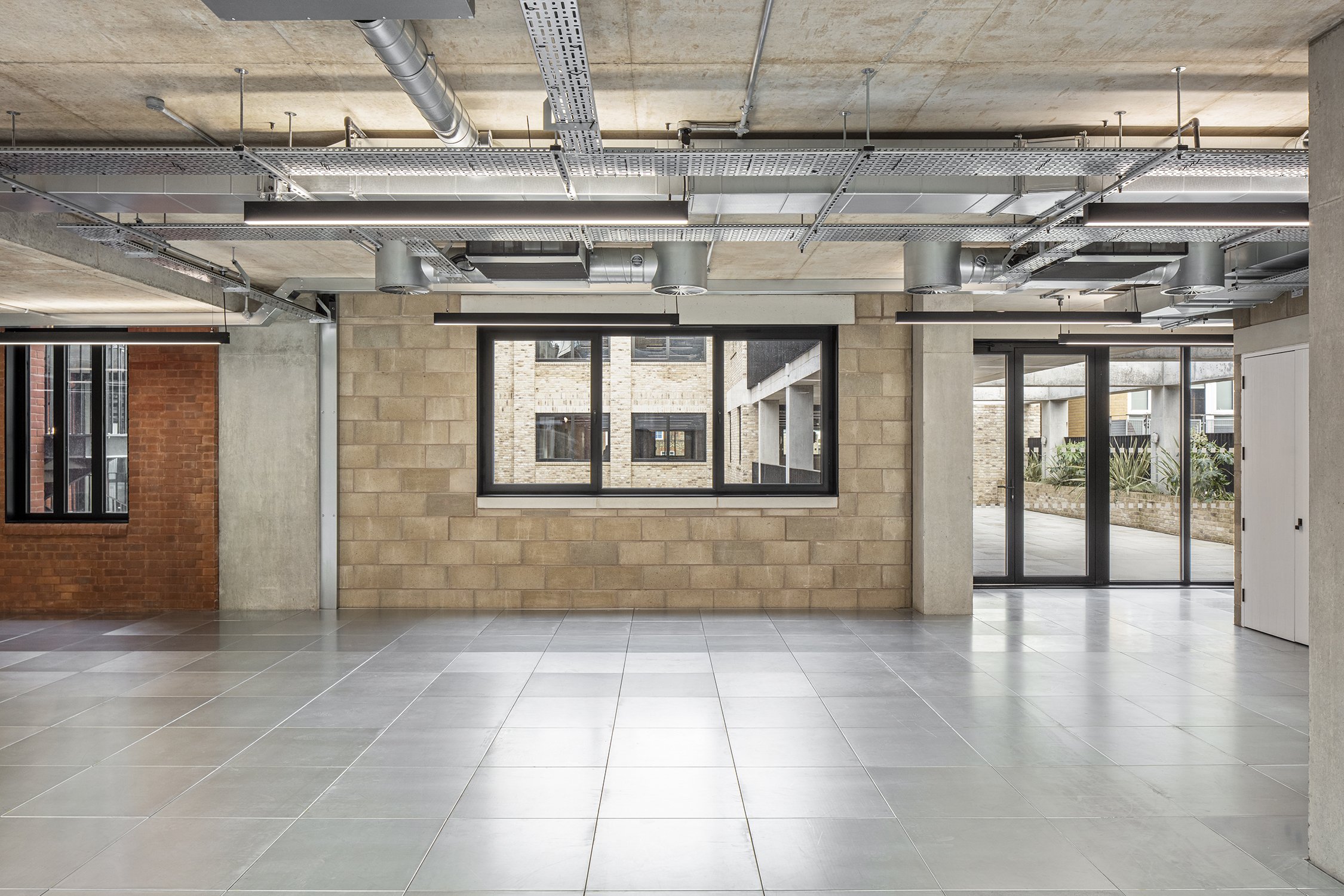Great Suffolk Yard
Great Suffolk Yard is a 7,623m2 fully let retrofit and new build commercial development in the Liberty of the Mint Conservation Area in Borough. The project reinstates the warehouse and yard typology that characterises the area. Three existing buildings and four new buildings enclose a central yard to create a thriving new multi-aspect workspace peppered with terraces.
The site as found represented a piece of Southwark’s rich and layered history. We worked in close collaboration with Southwark Design Officer Martin Mckay through several pre-applications - the first of which was purely focused on site surveys, context studies and archival research. Through this process we developed the final scheme, which balanced the sense of a family of buildings working together to form a coherent whole using extensive retrofit, extension and new build across the site.
The central yard space, an important existing feature, is a typical historic condition found in this area of industrial Southwark. Our archival research into the buildings on the site revealed clues to their historical uses, which informed the building names today: the Sea Building was used as base for trading fish; occupants of the Engineering Building site were hydraulic engineers making valves and meters; and the Works building was among the first places in London to manufacture bicycles. The surrounding context is a mix of post-war residential blocks, a parade of shops and cafés, and the three-storey red brick Libertine pub and adjacent Charles Dickens Primary School. The site is made up of industrial buildings from different periods – the earliest dating from 1850 – which have been altered over the years.
Whereas other schemes for the site had sought to demolish the existing fabric on the site, our scheme embraced the canyon-like yards typical of the area and reinstated this typology. The yard condition allowed us to create a unique workplace focused on wellbeing, outdoor terraces, cross ventilation, and multi-aspect spaces.
The proposals were developed by splitting the plot into key massing elements, and rebuilding it holistically through a series of new buildings, rooftop extensions and roof terraces. The result is a sense of spatial generosity, vistas and connectedness that unifies the buildings. There are multiple roof terraces across the site, which offer spaces vary in size from communal gathering and event space to smaller balconies for retreat and reflection. The yard is a dynamic communal space at the hub of the development, served by the new cafe and electric bike specialists, Volt.
The site is characterised by a mixture of brick types and tones, stone details, concrete banding, framing and lintels, timber doors, metal windows, corrugated metal roofing and tiled roofs. We drew on the material history of the site by exposing the existing fabric and introducing robust, complimentary face finished materials that can stand the test of time.
We collaborated with Rich Ardagh Studio to design the wayfinding signage and strategy. Lettering cut out from metal stencil plates, and paint applied to the brickwork by traditional signwriter Ash Bishop convey a raw, textured presence, highlighting the buildings’ industrial heritage, and referencing the materials and manufacturing that took place there. Public routes into the site and through the buildings are signalled by Staffordshire Blue tiles, which act as a navigational tool throughout the scheme.
The building has achieved BREEAM Excellent and WELL Gold certifications, which attest to Great Suffolk Yard’s credentials for both environmental sustainability and user wellbeing. The development has also received a WiredScore Platinum rating.
“The data-driven metrics of retrofit are clearly crucial, and this project ticks a lot of those boxes. But it’s as a piece of urbanism that Great Suffolk Yard makes its greatest contribution to the retrofit cause. The emotional heritage of buildings and places is hard to pin down. But, by adding to, rather than erasing, the built legibility of a place, Great Suffolk Yard celebrates identity and shores up shared histories in an inner-city neighbourhood now and into the future.”



























